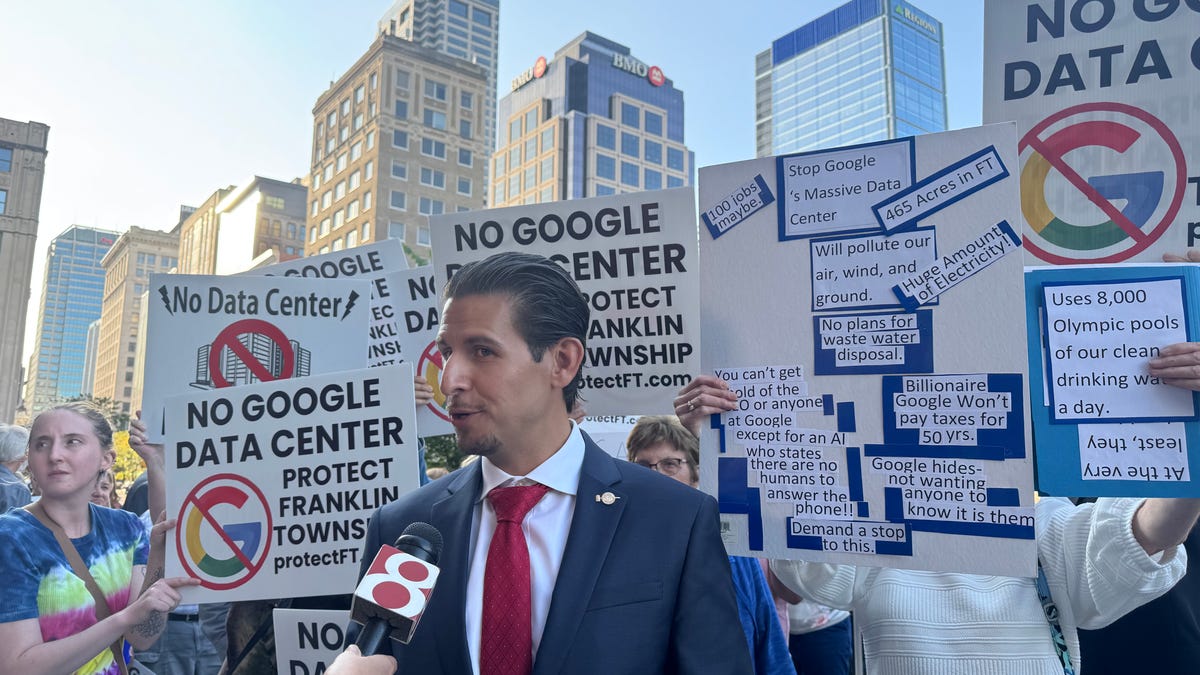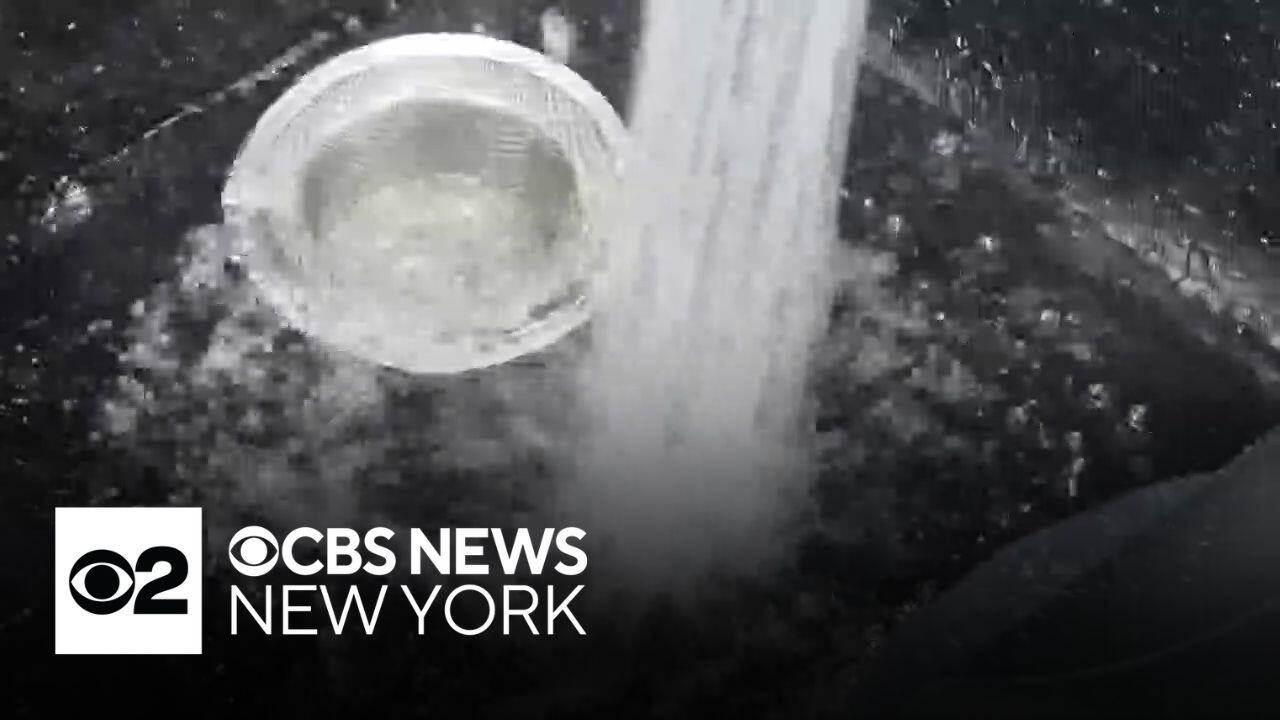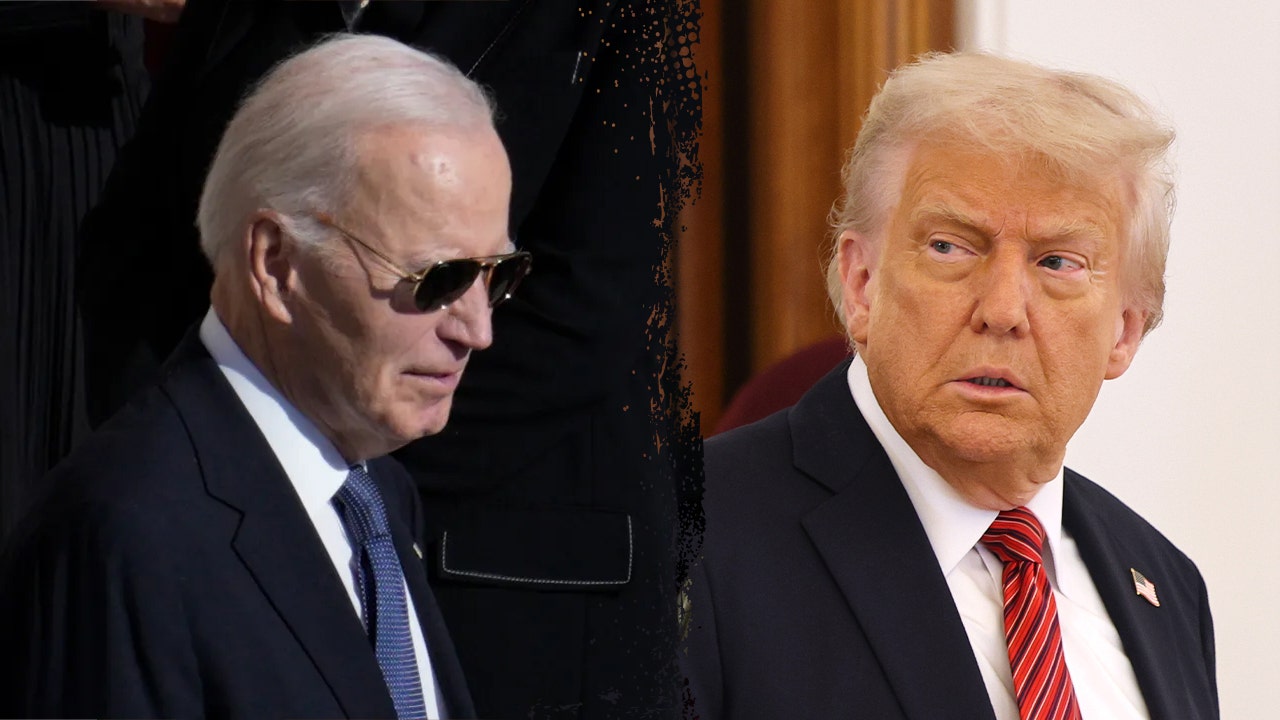New Jersey
How the Elections Transparency Act’s ‘dark money’ rules benefited NJ Democrats
4-minute read
NJ Democrats not expected to change agenda for election 2023: Video
Senior political writer Charles Stile sees not much changing for New Jersey Democrats.
The sweeping Elections Transparency Act was sold by Trenton’s ruling Democrats as a necessary revision of New Jersey’s outdated campaign finance system.
It would beam, for the first time, the purifying light of transparency onto some of New Jersey’s dark money groups, the law’s advocates contended. Complicated “pay-to-play” laws that bedeviled contractors for years would be streamlined. And donor limits would be increased to reflect the rising costs of running elections.
But the law also had another brass-tacks purpose. It provided New Jersey’s Democrats, who hold majorities in both the Assembly and the state Senate, with significant cash to steamroll their Republican rivals. That proved enough to crush the GOP’s hopes of expanding its foothold in Trenton — and maybe regaining majority control — after spending two decades on the sidelines of power.
The Democratic Party enjoyed a lopsided advantage in most of the six competitive contests that dominated each party’s fundraising and attention this fall, according to an examination of election filings released this week by the New Jersey Election Law Enforcement Commission. Campaigns are required to submit reports 20 days after the election.
NJ Democrats reaped dividends — and then some
It was an investment that yielded an important dividend for the Democrats, who had entered the fall contest concerned that their long hold on power was beginning to ebb or, worse, could be washed away in a Republican wave. It didn’t happen.
Instead of losing ground, the Democrats expanded their control of the Assembly by flipping six seats, while holding their 10-seat margin in the state Senate. In six of the most hotly contested races — which drew most of each party’s money and focus — the Democratic candidates and their accounts poured close to $11 million into the contests, compared with about $4 million by Republicans, records show.
That does not include millions more spent by super PACs and other independent expenditure groups, which raise money under looser guidelines and are not permitted to coordinate with the candidates’ campaigns. A summary of outside spending is expected to be released by ELEC later this week.
But the outside spending role — which included the financing of phony “phantom candidates” linked to the South Jersey Democratic Party machine — more than likely tilted the Democrats’ advantage even further.
‘Dark money’: Disputed election overhaul bill that would expose donors passes NJ Legislature
An unsurprising edge
To some, the Democratic edge comes as no surprise.
The new Elections Transparency Act allowed for the doubling of campaign contributions for individual candidates and the tripling of large donations to state and county party accounts. That alone, some observers said, made it inevitable that the party that controls both houses of the Legislature and the governor’s office would reap the windfall. It’s the party that controls the fate of coveted legislation and lucrative government contracts.
“Some of the senators were saying, ‘Well, look, this will help us; we’ll be able to raise money throughout the four years,’ ” said Senate Republican leader Anthony Bucco Jr. of Morris County, who voted against the Elections Transparency Act for a variety of reasons. “To me, it was absolutely clear that this was not going to benefit Republicans. It was going to benefit the Democrats, because they’re the party in power.”
And with that money comes the ability to saturate mailboxes and media markets with political advertising and drown out campaigns with lesser means. That was the case in the competitive 11th Legislative District in Monmouth, where state Sen. Vin Gopal was viewed as the most endangered Democrat.
Charlie Stile: Dark money disclosures in NJ elections are a ‘work in progress.’ Will they work?
Gopal hung on to his seat in the 2021 contest while his two Assembly running mates lost. This time, Gopal found himself in the cross-currents of culture war issues. Several Monmouth County school systems (although outside his own district) were engulfed in a firestorm over “parental rights” involving transgender students while opponents of Gov. Phil Murphy’s push to build offshore wind farms had also infuriated many Jersey Shore residents.
Gopal, whose district includes Asbury Park and Long Branch, distanced himself from both of those issues. But he also had a full Democratic Party effort behind him, including unions, independent attack ads from a group aligned with state Senate President Nick Scutari, and a lopsided fundraising advantage.
Gopal and his Assembly running mates, Luanne Peterpaul and Margie Donlon, amassed $3.7 million compared with $739,000 raised by Republican state Senate challenger Steve Dnistrian and GOP Assembly incumbents Marilyn Piperno and Kim Eulner. In the end, Gopal won by 16 points and swept in Peterpaul and Donlon on his coattails.
GOP ‘ran out of juice’ as labor donations surged
Ironically, it seemed over the summer that the fury over parental rights, which Republicans sought to harness, was looming as a frightening threat to Democrats. Some feared that it had the ability to attract moderate Democrats and independents and older voters, who tend to have a larger presence in low-turnout elections. But in the end, the Republicans simply didn’t have enough money to communicate for the long haul of the race.
Republicans “ran out of juice,” said Micah Rasmussen, director of the Rebovich Institute for New Jersey Politics at Rider University. “They couldn’t drive that message through the fall. And the Democrats knew they were gonna pour it on and the Republicans wouldn’t be able to.”
Unions — already generous donors to free-wheeling super PACs and big spenders in their own right — took advantage of the Elections Transparency Act, which doubled what unions could give directly to candidates, from $2,600 to $5,200, and through their PACs, from $8,200 to $16,400.
Labor’s increased largesse, not surprisingly, benefited the Democrats.
Gopal collected the maximum $16,400 from several union PACs: Greater New Jersey Carpenters, International Brotherhood of Electrical Workers 456 and 269, the New Jersey Laborers, and IBEW Local 400, State Electrical Workers, where Gopal is a member. Gopal’s ticket also benefited from the get-out-the-vote manpower of the Service Employees International Union, which bused in canvassers from their locals in New York.
In the 3rd Legislative District, in Salem, Gloucester and Cumberland counties, state Sen.-elect John Burzichelli, D-Paulsboro, drew $127,000 from unions and union PACs — or $35,800 more than he could have collected under the previous lower limits.
A day after the election, Scutari hailed the Elections Transparency Act “because we saw more transparency than we ever saw before in terms of fundraising.” He was referring specifically to the provisions that required independent expenditure groups to disclose donations of $7,500 or more.
But the early reports this week on the election also make it clear that the new law gave his party an enormous advantage and one that will keep it in power for the next two years — and possibly many more election cycles to come.

New Jersey
Sister of NBA star Naz Reid fatally shot in New Jersey

Toraya Reid, the sister of NBA star Naz Reid of the Minnesota Timberwolves, was fatally shot at an apartment complex in Jackson Township, New Jersey, on Saturday.
The Ocean County Prosecutor’s Office said that Shaquille Green, 29, is charged with murder, possession of a weapon for an unlawful purpose and unlawful possession of a weapon in connection with her death.
The prosecutor’s office said Toraya Reid, 28, and Green were in a “dating relationship.”
The Context
Naz Reid is a center with the Timberwolves and a New Jersey native. He is in his seventh season with the team and recently signed a five-year contract.
Naz Reid reposted a post about his sister’s death and shared photos of her on his Instagram story.
New York Knicks star Karl-Anthony Towns, Naz Reid’s former teammate and also a New Jersey native, said he is “heartbroken” in an X post.
AP Photo/Nate Billings
What To Know
The Jackson Township Police Department received a report of shots fired and an unresponsive woman in the roadway at the Paragon Apartment Complex on Larsen Road at about 11 a.m. Saturday.
Responding officers found a deceased woman suffering from apparent gunshot wounds laying near the exit of the complex, the prosecutor’s office said. The woman was later identified as Toraya Reid.
Officials observed a man, later identified as Green, running on North New Prospect Road. The prosecutor’s office said he was taken into custody without incident and transported to Jackson Township Police Headquarters.
The Ocean County Prosecutor’s Office Major Crime Unit, Jackson Township Police Department and Ocean County Sheriff’s Office Crime Scene Investigation conducted an investigation. The prosecutor’s office said the investigation identified Green as the person responsible for Toraya Reid’s death.
What People Are Saying
Karl-Anthony Towns, current New York Knicks and former Minnesota Timberwolves center, on X: “Heartbroken. No words can ever take away the pain for my brother. Holding everyone close in prayer today.”
The Ocean County Prosecutor’s Office, in a press release: “Prosecutor [Bradley] Billhimer commends the Ocean County Prosecutor’s Office Major Crime Unit, Jackson Township Police Department, Ocean County Sheriff’s Office Crime Scene Investigation Unit, and Ocean County Medical Examiner’s Office, for their collaborative efforts in connection with this investigation leading to Green’s swift apprehension.”
What Happens Next
The prosecutor’s office said Green is being held at the Ocean County Jail pending a detention hearing.
Do you have a story that Newsweek should be covering? Do you have any questions about this story? Contact LiveNews@newsweek.com.
New Jersey
Did anyone win Powerball? Winning numbers for Monday, Sept. 1, 2025

Powerball, Mega Millions jackpots: What to know in case you win
Here’s what to know in case you win the Powerball or Mega Millions jackpot.
Just the FAQs, USA TODAY
Powerball winning numbers are in for the Monday, Sept. 1 drawing with a jackpot that reached an estimated $1.1 billion ($498.4 million cash option).
The winning numbers in Monday’s drawing are 8, 23, 25, 40, and 53, with Powerball number 5. The Power Play number is 3.
Did anyone win the Powerball jackpot?
There was no winner for the Powerball jackpot.
When is the next drawing of the Powerball?
The next Powerball drawing is Wednesday. Drawings are held at 10:59 p.m. every Monday, Wednesday and Saturday.
How late can you buy a Powerball ticket?
In New Jersey, in-store and online ticket sales are available until 9:59 p.m. on the night of the draw.
What does it cost to play Powerball?
Powerball costs $2 to play. For an additional $1 per play, the Power Play feature can multiply nonjackpot prizes by two, three, four, five or 10 times.
Are you a Powerball winner? Here’s how to claim your lottery prize
All New Jersey Lottery retailers will redeem prizes up to $599.99. For prizes over $599.99, winners can submit winning tickets through the mail or in person at New Jersey Lottery offices. By mail, send a winner claim form, winning lottery ticket and a copy of a government-issued ID to New Jersey Lottery, Attn: Validations, PO Box 041, Trenton, NJ 08625-0041.
Winners can drop off their claim form and winning ticket in person at the New Jersey Lottery office where a secure drop box is available. Claim forms are also available at the office. Hours are Monday to Friday from 8:30 a.m. to 4:30 p.m.; Lawrence Park Complex, 1333 Brunswick Avenue Circle, Trenton, NJ 08648.
To find a lottery retalier, you can search the NJ lotto website.
What is the Powerball payout?
The complete guide to winnings is:
- Match 5 White Balls + Powerball: Jackpot
- Match 5 White Balls: $1 million
- Match 4 White Balls + Powerball: $50,000
- Match 4 White Balls: $100
- Match 3 White Balls + Powerball: $100
- Match 3 White Balls: $7
- Match 2 White Balls + Powerball: $7
- Match 1 White Ball + Powerball: $4
- Match Powerball: $4
- Match 5 White Balls with Power Play: $2 million
- Match 4 White Balls + Powerball with Power Play: $200,000
- Match 4 White Balls with Power Play: $400
- Match 3 White Balls + Powerball with Power Play: $400
- Match 3 White Balls with Power Play: $28
- Match 2 White Balls + Powerball with Power Play: $28
- Match 1 White Ball + Powerball with Power Play: $16
- Match Powerball with Power Play: $16
What are the odds of winning the Powerball jackpot?
The overall odds of winning the Powerball are 1 in 292.2 million.
How do I find the Powerball winning numbers?
Powerball drawings are broadcast live every Monday, Wednesday and Saturday at 10:59 p.m. from the Florida Lottery draw studio in Tallahassee. Drawings are also lived streamed on Powerball.com. The winning numbers are posted to the Powerball and New Jersey Lottery websites.
New Jersey
Boil water advisory lifted for most in Paterson and Prospect Park, New Jersey

A boil water advisory in New Jersey impacting more than 100,000 people in the Paterson area has been partially lifted after the third water main break this month.
The Passaic Valley Water Commission said Sunday it lifted the advisory for all customers in the Borough of Prospect Park and most in Paterson.
Officials said extensive testing in coordination with state environmental and health officials confirmed the water safe is to drink in both municipalities, expect for some parts of Paterson.
The streets that remain under the boil water advisory are: Katz Avenue; Kearney Street between Katz and Granite; Granite Avenue between Redwood and West Broadway; West Broadway between Katz and Granite; and Jasper Street between Katz and Granite.
Officials said they are interconnected with Manchester Utilities Authority, which has not lifted its boil water advisory on customers, including those in Haledon and North Haledon.
People in these areas should continue boiling their water for at least one minute until further notice, officials said.
How to ensure clean water is flowing
Passaic Valley Water Commission officials urge customers to take these steps to ensure clean water flows after a boil water advisory is lifted:
- Run all cold-water faucets for about 8–10 minutes to flush service connections and interior plumbing.
- Thoroughly clean or replace showerheads and faucet aerators (screens).
- Drain and refill your hot water heater (set to a minimum of 120°F to reduce the risk of Legionella growth while avoiding scalding).
- Empty and clean automatic ice makers, water dispensers, and water chillers. Run ice makers through a full 24-hour cycle and discard the ice.
- Flush refrigerator water dispensers for at least five minutes. Check manufacturer recommendations for filter replacement.
- Regenerate or service water softeners/cartridge filters as recommended by the manufacturer.
- Drain and refill water reservoirs in tall buildings.
-

 News1 week ago
News1 week agoVideo: A Father Took His Daughters to School. Then Came the Gunshots.
-

 World1 week ago
World1 week agoThe Global Sumud Flotilla to Gaza: Everything you need to know
-

 Lifestyle1 week ago
Lifestyle1 week agoHow 3 Hawaiian teen princes brought surfing to the mainland
-

 Politics1 week ago
Politics1 week ago‘Nonsensical’ illegal immigrant tuition policy scrapped in Kentucky, Bondi lawsuit deal
-

 Movie Reviews1 week ago
Movie Reviews1 week ago‘Everywhere Man: The Lives and Times of Peter Asher’ Review: Documentary Traces a Remarkable Under-the-Radar Musical Legacy
-
News1 week ago
A community gathers for the first Mass after tragedy as questions still remain | CNN
-

 Politics1 week ago
Politics1 week agoVideo: Why Black Women Are Seeing Job Losses
-
Business1 week ago
Trump moves to cut more than 500 Voice of America employees despite court ruling






















